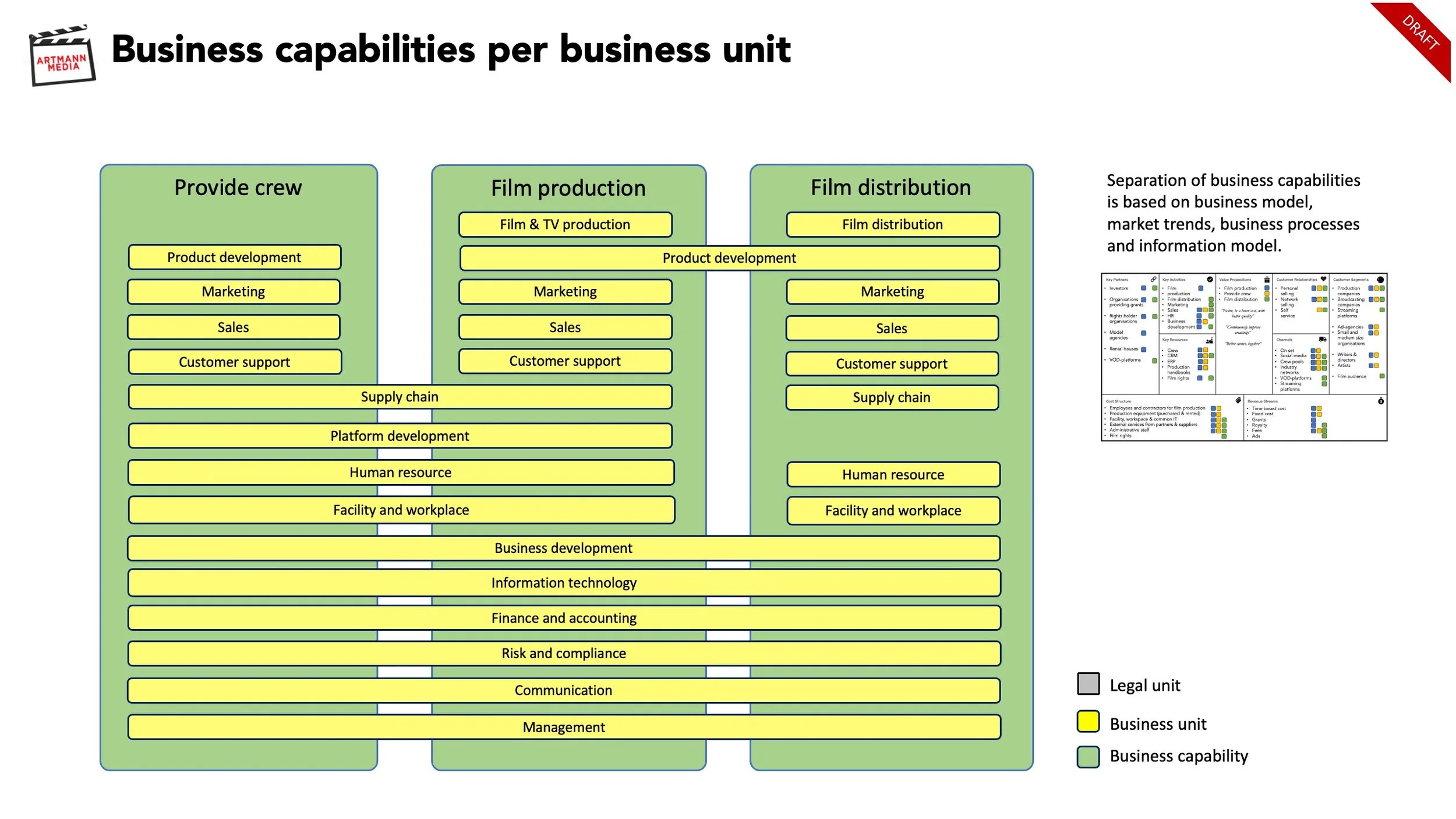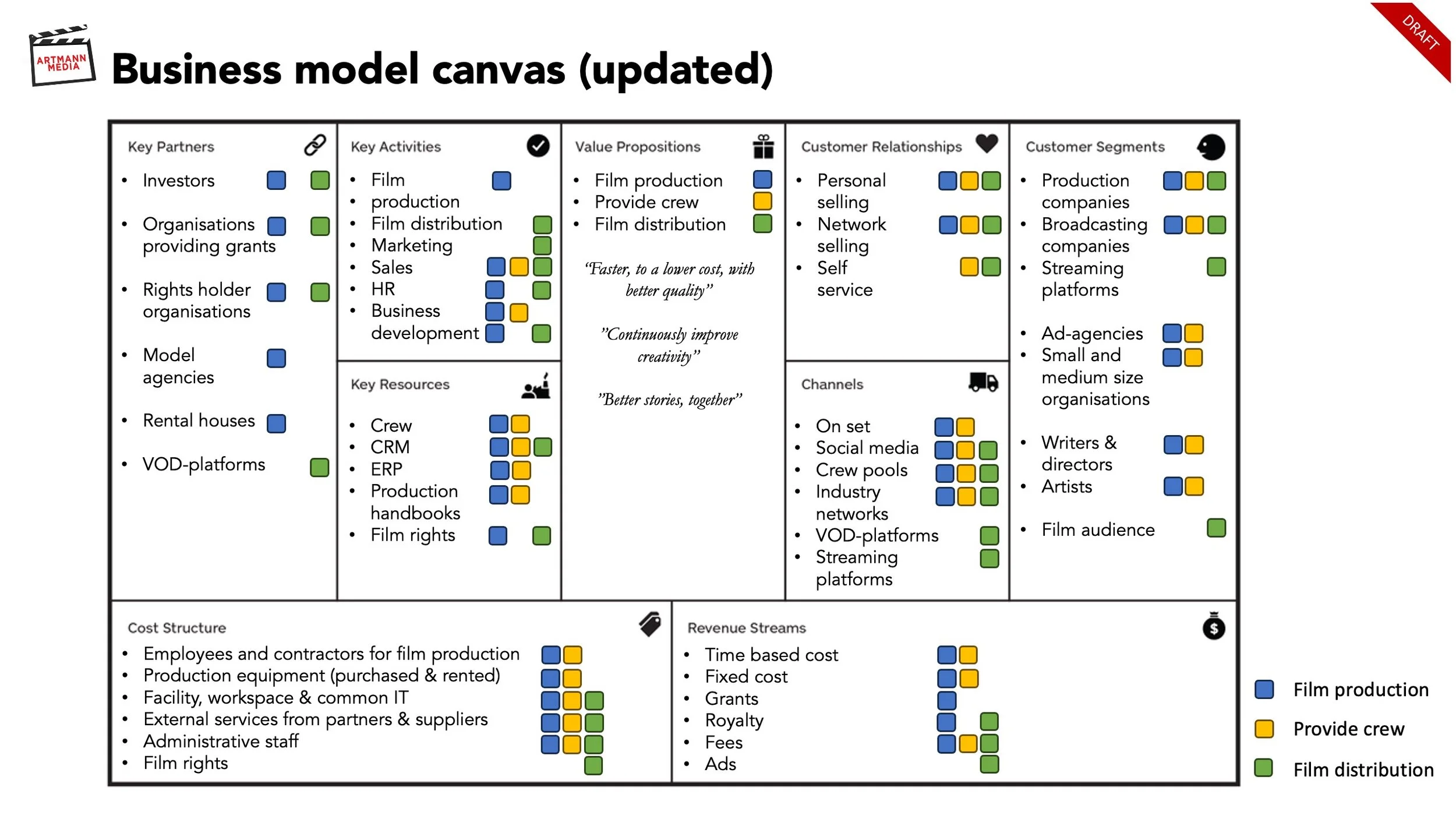Same, but different
When is a business capability too different to be treated in the same way between business units?
We start with supply-chain to see how different the capability is between film production, film distribution and provide crew & equipment.
Film distribution
To sell a film, you need a few type of resources
Rights for distribution
Media to distribute
Promotional material
Optional subtitles
Provide crew & equipment
To provide crew & equipment to customers, you don't need much more, but different type of resources.
Crew
Film equipment
Promotional material
Film production
Then compare these two business units to film production where we need much more to purchase or rent for the actual production, and everything needs to be just-in-time.
Script / synopsis with rights
Actors & extras
Crew
Props
Makeup & wardrobe
Set design
Locations
Music / score (rights)
Archive media
Film equipment
Summary
Film distribution resources differs very much from resources for Film production and Provide crew & equipment. Provide crew & equipment is a subset of Film production, and use the same resources. The assumption is no overlap between production and distribution, except when we do live events.
Process fit
Our supply-chain process have not been prioritized so far, as we have been concentrating on film production per se. However, better supply-chain for film production lower the costs and delays in production. Thus, we need to improve in this area. Both for allocation of cast and crew, but also for everything else needed in productions, including logistics.
Working assumption is to start with supply-chain in standard APQC, but also using APQC Broadcast as reference, when defining a proper supply chain process for all business units.
Application support
Yamdu supports managing crew & cast, props, set design, media, etc, in production, but not the supply-chain part of ordering from suppliers. What we need is a system that manages items and stock levels, in interaction with Yamdu, as well as purchase orders.
This will work well for film production and provide crew & equipment. However, film distribution uses different data, processes are not the same and you different skills as an employee to manage distribution. From a business perspective, there are no benefits of using the same system as for film production, more of concerns as it's getting more complicated and with higher license costs.
Conclusion
From a supply-chain perspective, keep film distribution autonomous.





